Question… what do a sandcastle, a spider’s web and a bees nest all have in common?
You guessed it! They are all constructed from a single material. Whilst the spider and the honey bee may have assistance from an obliging branch or a hollowed tree trunk, the man-made sandcastle – in its purest form – is a structure made entirely from sand, built upon sand, and completely surrounded by sand. This symbol of summertime is an expression of what is possible when our imaginations collide with the raw material of the coastline.
Perhaps it’s memories of long, summer afternoons of castle building on the beach that have instilled in me an appreciation for single material architecture. Or maybe I feel that there is something vaguely virtuous in exploring the full potential of a material. There are certainly constraints imposed by this method. Every material has its limitations (try constructing a cantilever out of sand!) but so too are there opportunities found in its unique attributes. ‘Monomateria’ is the name I have coined for this approach to design. What follows is a brief exposé of a selection of buildings that each take design cues from the multiple possibilities presented by a single material.
Corten Steel | City Library, Bruges
A design competition was held in 2012 to select an architectural team for the proposed extension to the City Library in Bruges. Belgian architects Studio Farris were ultimately successful with a simple concept that proposed a rational, rectangular form for the new addition. To make a distinction between old and new, a markedly different material was chosen to contrast with the original building. At 550m² the new addition is fairly compact and the choice of a single material seems apt to avoid the ‘visual clutter’ that could arise from over-articulating the facades.
Corten steel was the single material chosen, with the cladding varied in three different ways to create interest. Here we see a combination of solid panels, perforated panels and embossed panels with a few carefully placed windows providing the only counterpoint to the steel. The choice of an eye-catching material to fully clad the building is a bold gesture. Any other quirks – such as complex geometry or decoration – would arguably render the design over-the-top. However, this building exhibits a restrained form that allows the rich ochre hues of the Corten steel to define the new extension.
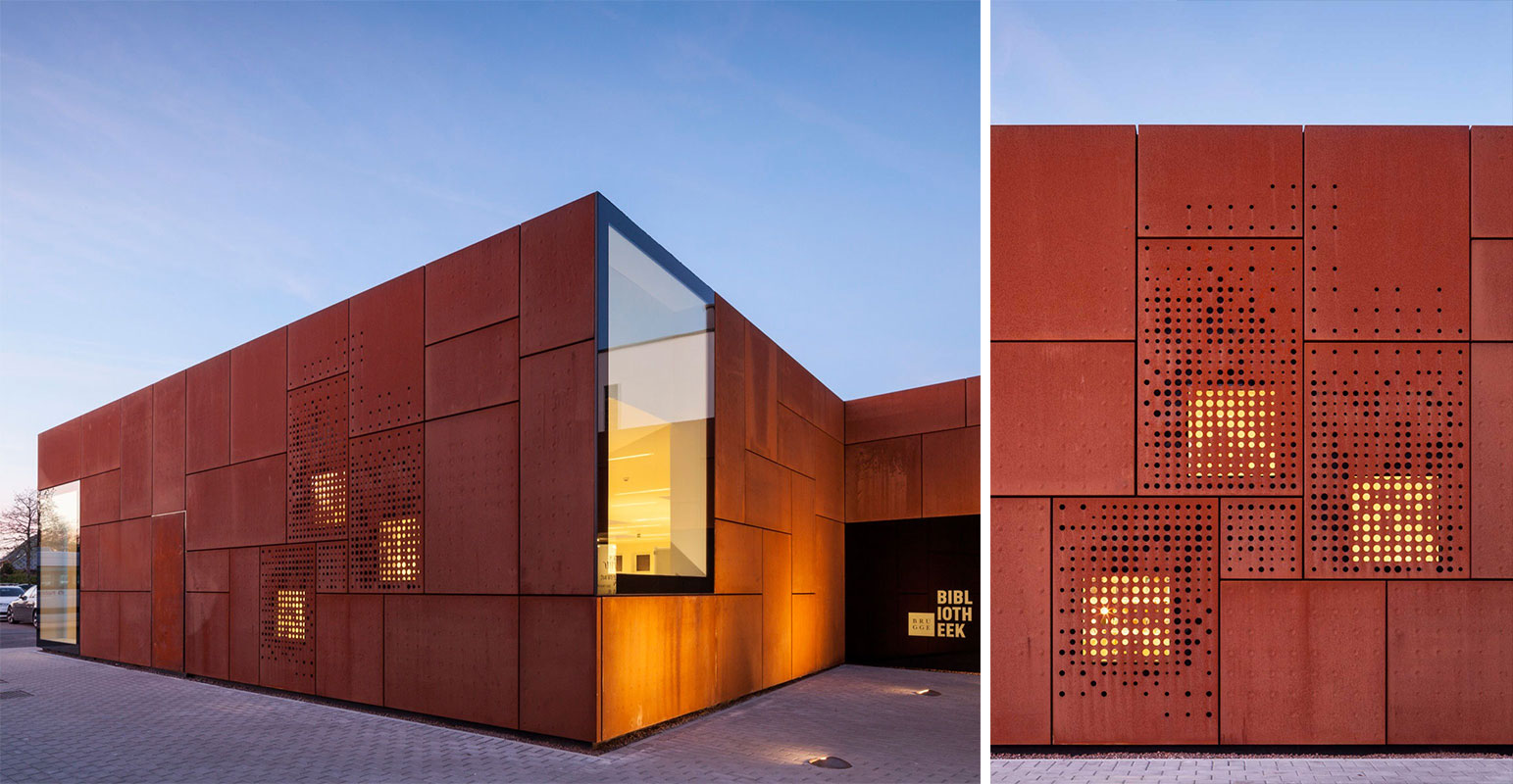
Extension to the City Library in Bruges designed by Belgian architects Studio Farris. The building is clad in Corten steel panels and was opened to the public in 2015. Photography by Tim Van de Velde.
Bronze | The Bund Finance Centre, Shanghai
Two British heavyweights are responsible for the monumental architecture of Shanghai’s The Bund Finance Centre. Heatherwick Studio together with Foster + Partners co-designed a complex of 8 institutional buildings delivering over 420,000m² of prime real estate on the waterfront in Shanghai. The pièce de résistance of the masterplan is indisputably the spectacular screen to the centrally located Cultural Centre. Conceived as a veil of tassels wrapping the building, the design takes full advantage of the malleable property of metal to form stainless steel into 675 tubular lengths suspended from the roof structure.
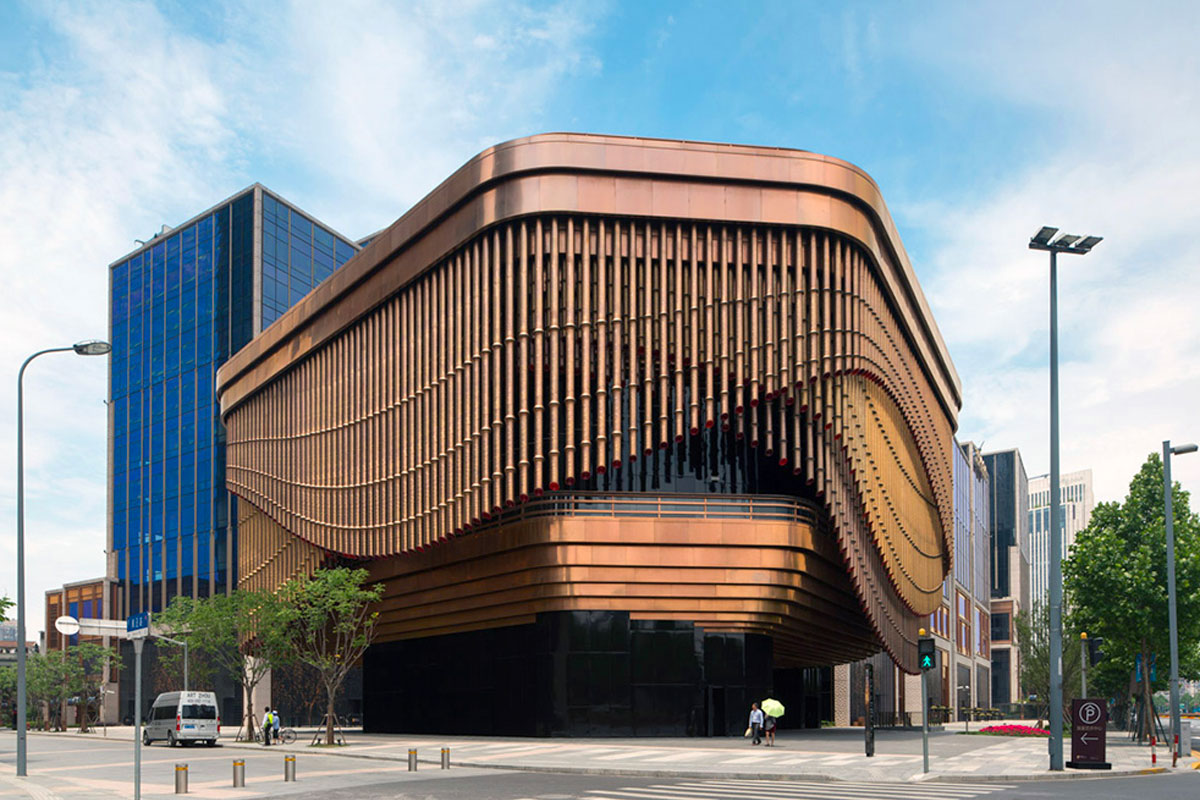
The Cultural Centre in Shanghai’s The Bund Finance Centre was designed by Heatherwick Studio and Foster + Partners to reflect the open stages of traditional Chinese theatres. Photograph by Tim Franco.
The choice of a bronze finish conveys the ‘jewel-like’ quality of the Cultural Centre. Physical Vapour Deposition was used to create the coloured stainless steel “tassels” via a process of Titanium Ion sputtering which here gives the material its warm, bronze lustre.
Bronze coloured stainless steel sheet is used to clad the fascia to the roof, and the material is extensively seen throughout the precinct on window surrounds and vents. The Cultural Centre is a brilliant example of how a single material can be used to unify a series of disparate buildings and provide visual cohesion at a macro scale.
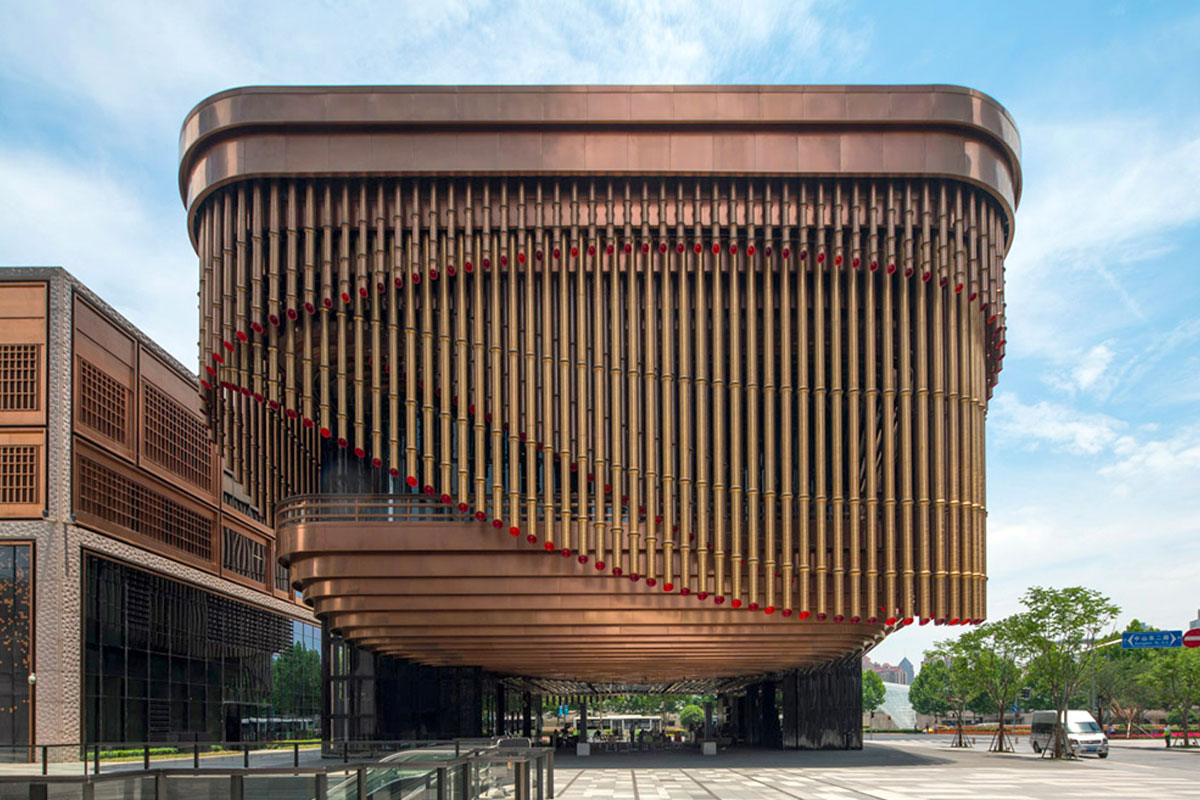
The Cultural Centre at the heart of The Bund Finance Centre on Shanghai’s waterfront. The building is home to the Fosun Foundation who program arts and cultural activities at the venue. Photograph by Tim Franco.
Limestone | Ripon College Chapel, Oxford
The dictionary defines ‘monolithic’ as ‘made of only one stone’. Whilst it is inconceivable that a large-scale contemporary structure could be carved from a single mass without joint or junction, the word is still apt to describe Ripon College Chapel in Oxford by Niall McLaughlin Architects. In this example, the pre-eminent material is limestone which shrouds the pure, elliptical form of the building. The external facade is divided into three distinct bands and each displays limestone in a different state.
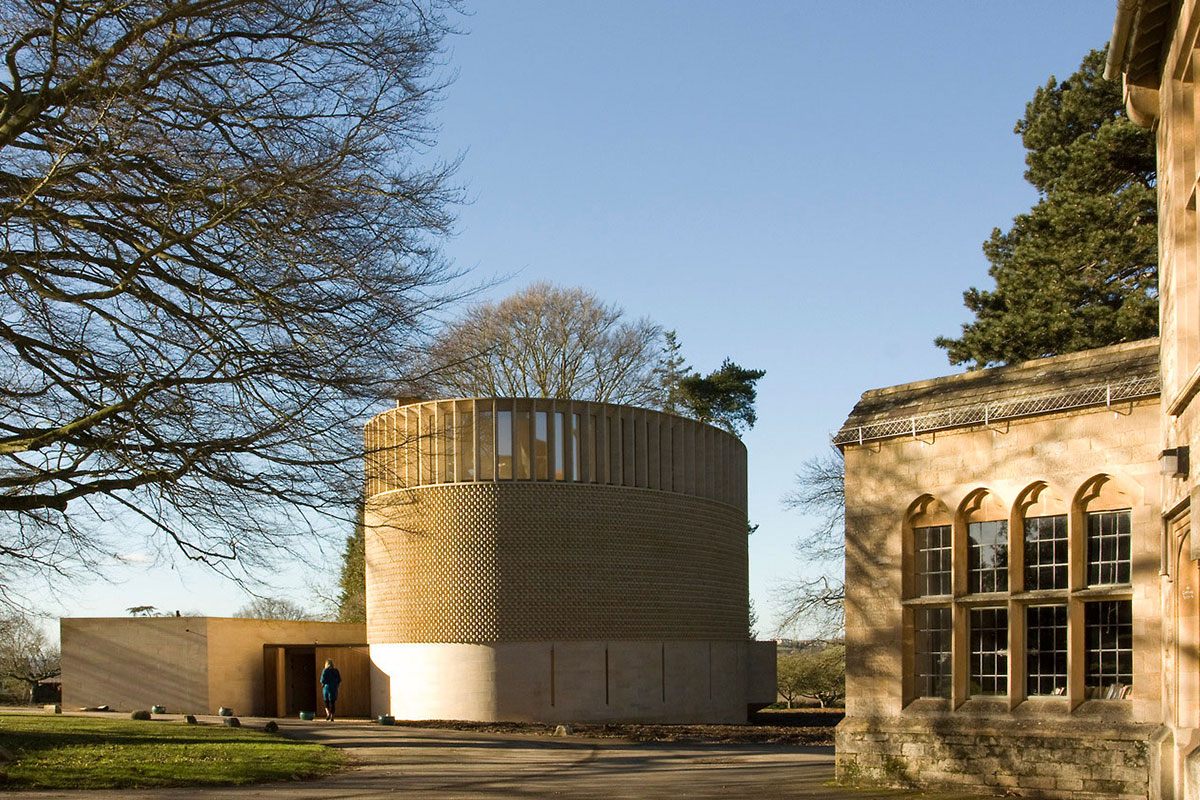
Ripon College Chapel in Oxford designed by Niall McLaughlin Architects. The chapel was runner-up in the Stirling Prize – awarded for architectural excellence – in 2013. Photograph by Dennis Gilbert.
The base level exhibits traditional, ashlar masonry construction with smooth stone blockwork neatly stacked. In the mid-section, the stone courses are arranged in a dog-tooth bond with blocks laid corner-to-corner rather than side-to-side. In this layer, the surface of the stone is rough and abrasive in contrast to the sleek finish on the stonework below. The upper-most layer incorporates clerestory windows to provide high-level lighting to the Chapel interior. The window glazing is set between deep stone blades that introduce a strong, vertical rhythm to the upper portion of the facade.
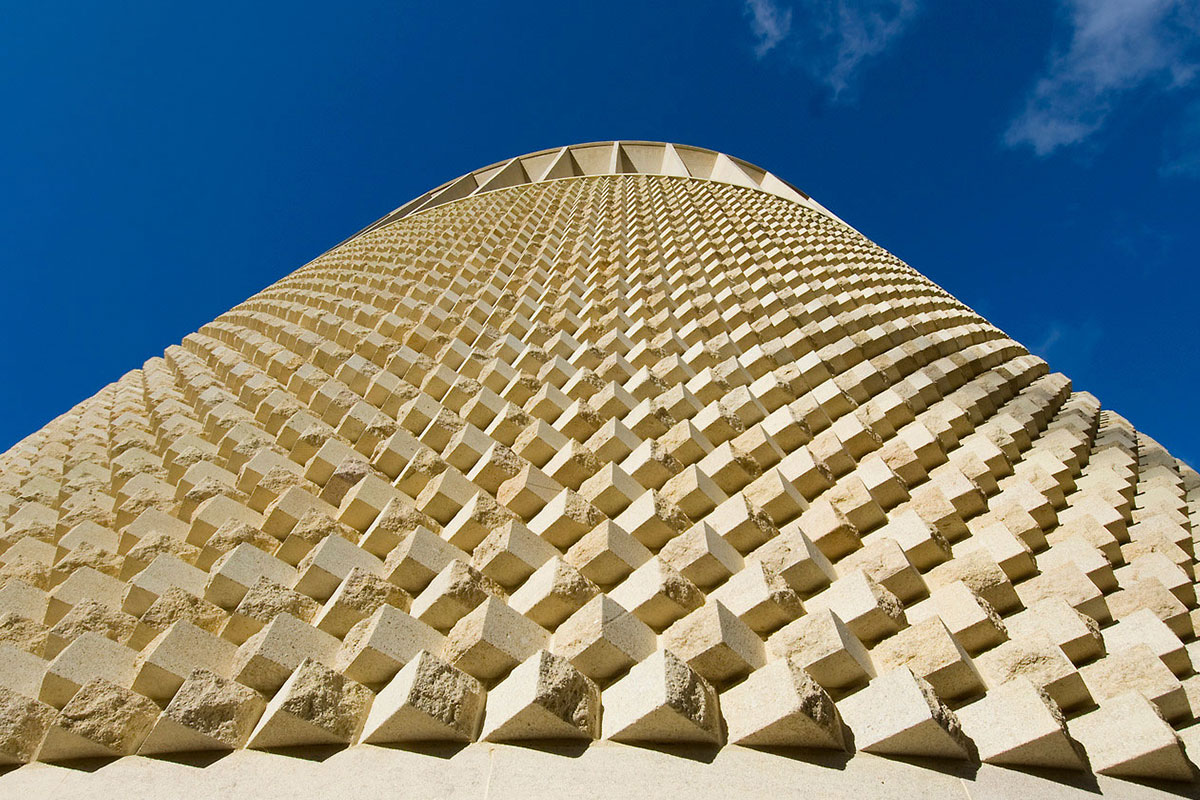
The limestone exterior of Ripon College Chapel in Oxford designed by Niall McLaughlin Architects. The college trains men and women for ministry in the Church of England. Photograph by Niall McLaughlin Architects.
Whilst the overall composition celebrates a single stone edifice, variation in texture helps to visually compartmentalise the building to add interest and catch the eye.
Brick | Termitary House, Thanh Khe, Vietnam
There are many ways to skin a building with brick, and Pinterest is positively bursting with examples of the playful possibilities that masonry construction can afford. One particularly fine example is the Termitary House in Vietnam by architects Tropical Space. It’s fair to say these local designers have become especially adept at their signature style: the ventilated brick building. With high temperatures and high humidity typical throughout the summer months, it follows that the architectural vernacular would promote a construction type with high thermal mass. Internal as well as external walls are made entirely of brick, with openings throughout the course work provided for ventilation and visual connectivity to internal courtyards.
The resulting architecture is simple and unadulterated. The purity of its cubic form and the restrained material palette allow the subtle variations in the brick to be celebrated. This building was completed in 2014 and seems to have forecast the current trend in domestic construction for playful patterns and hit-and-miss brickwork to articulate facades.
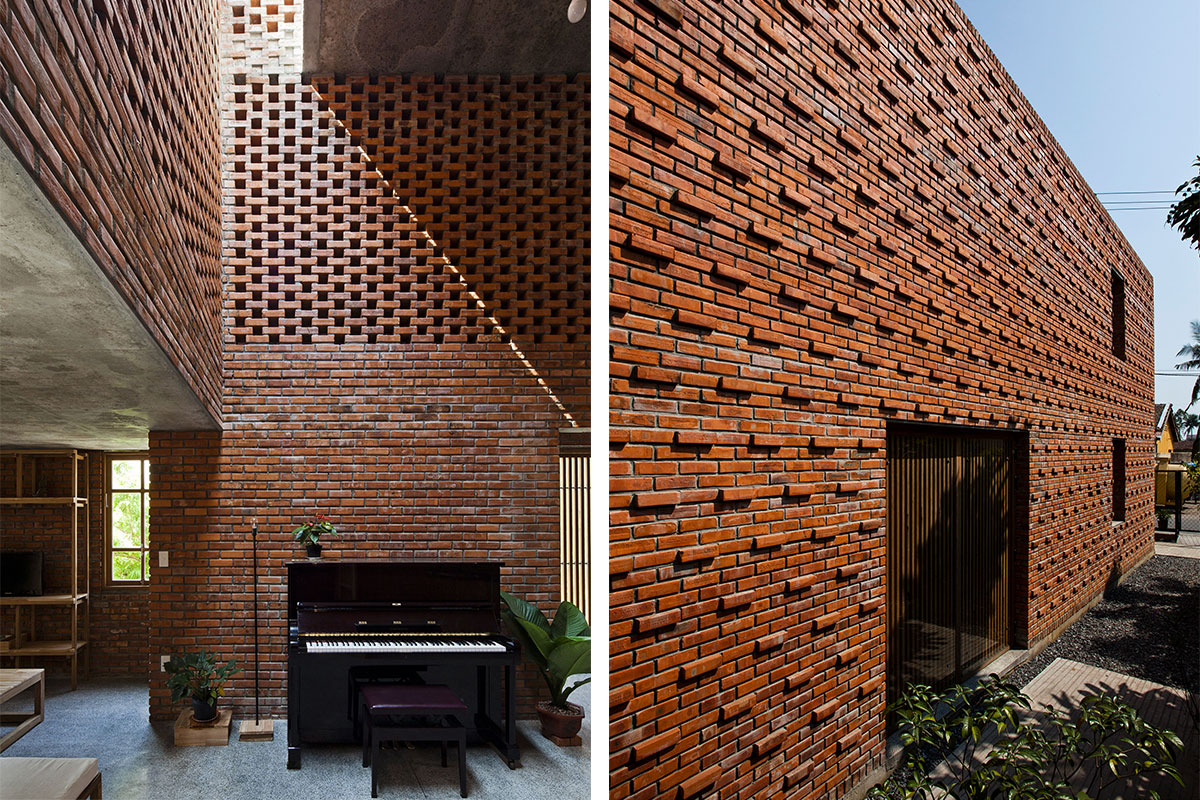
Termitary House in the coastal city of Da Nang, Vietnam is constructed from baked bricks, a traditional building material in the area. Designed by architects Tropical Space. Photographs by Hiroyuki Oki.
Timber | St Andrew’s Beach House, Mornington Peninsula, Australia
Rudimentary timber buildings seem to suggest a vernacular best left to the annals of 10th Century feudal farming. Masonry has long been the preferred material for the ruling classes and, ever since the Industrial Revolution threw to the fore the new possibilities presented by steel construction, the need to assemble buildings entirely from timber has been in rapid decline.
Fast forward a couple of centuries and this outmoded technology appears to be making a comeback. A shining example is Austin Maynard’s St Andrew’s Beach House on the Mornington Peninsula in southern Australia. From form, to frame, to materiality, this project defies the norms at every opportunity. Its most obvious deviation from the mainstream is the circular plan that defines the building’s cylindrical form. No doubt this choice introduced some structural complexities and – given that this is an exposé on singular materials – it comes as no surprise that the framing is entirely in timber. Engineered timber beams and columns are in radial formation and exposed within the dwelling. The resulting impression is of a spiral shellfish… or a sea urchin… or a ripple on water. Whichever way, it’s apt! Timber framed windows, timber screening and solid timber cladding complete this tribute to timber construction.
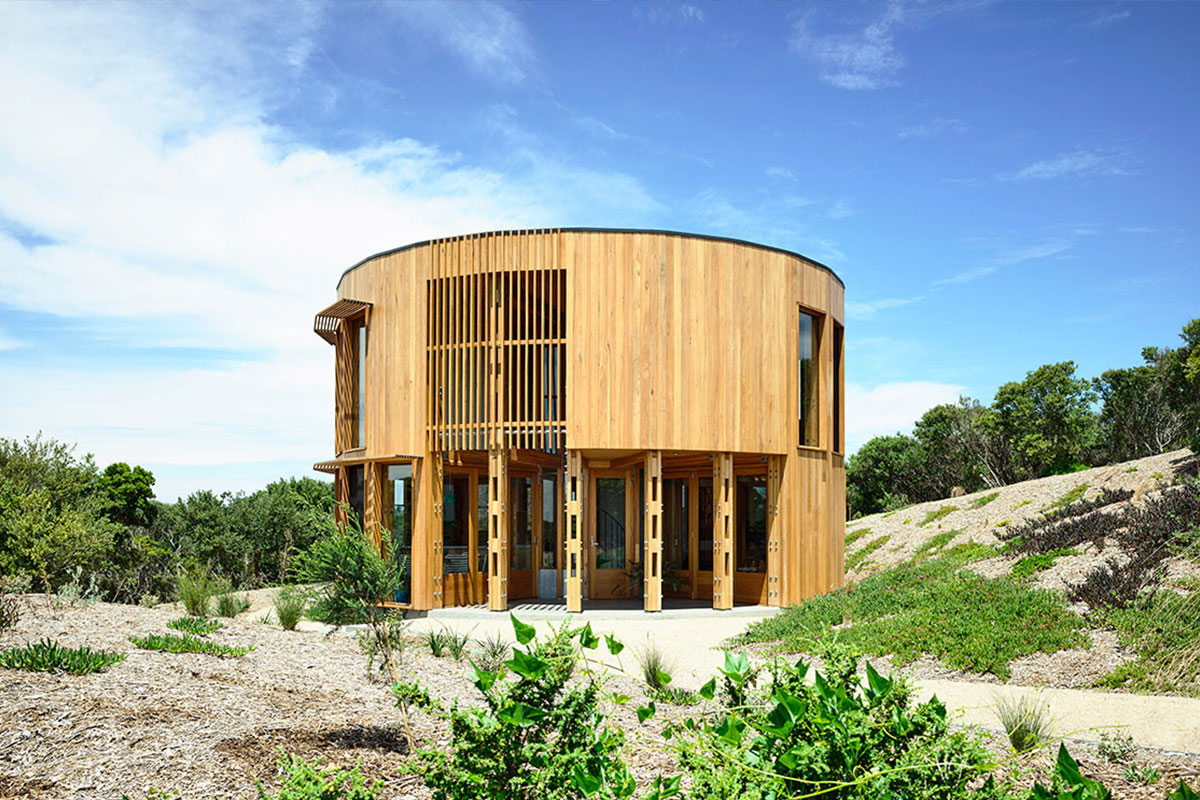
A tribute to timber: St Andrew’s Beach House is an award-winning two-storey circular holiday home in southern Australia designed by Australian architects Austin Maynard. Photograph by Derek Swalwell.
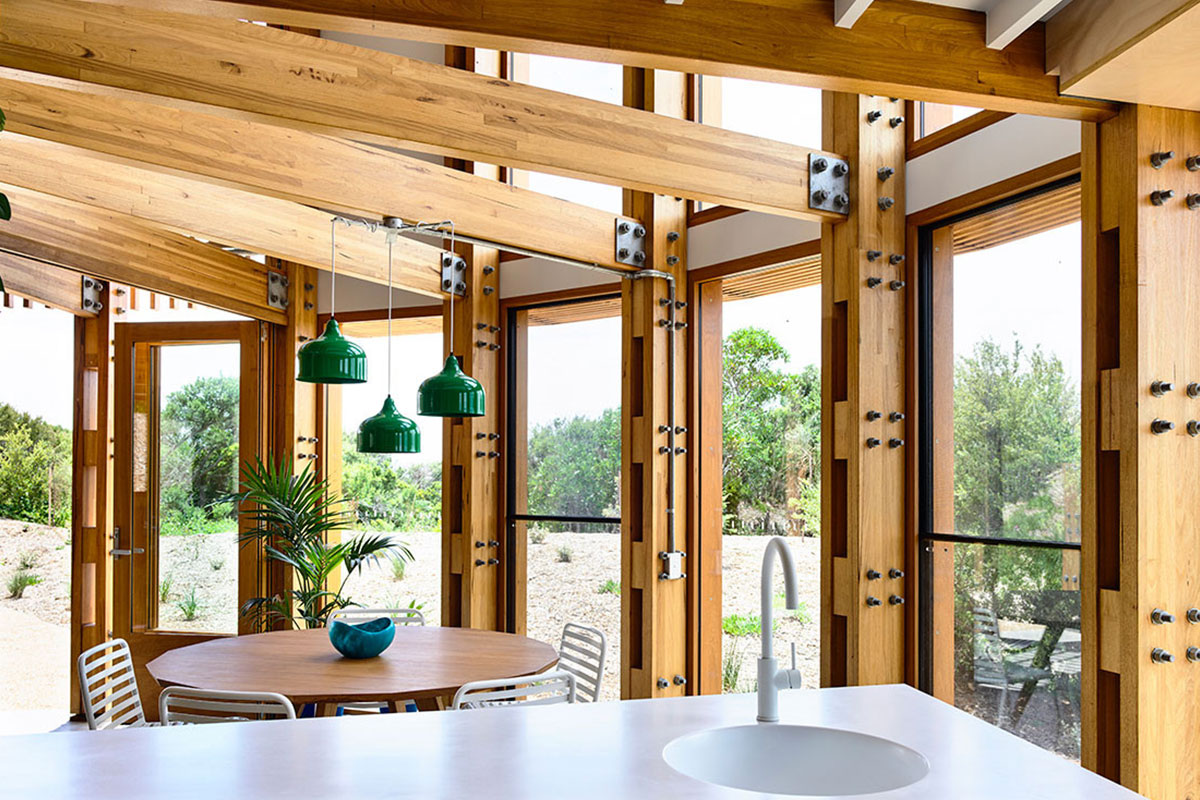
St Andrew’s Beach House on the Mornington peninsula in southern Australia. Constructed from timber and solar-powered, the building was designed by architects Austin Maynard. Photograph by Derek Swalwell.
So there we have it! Five markedly different examples of contemporary architecture that each demonstrate the power and potential of a single material. A subtle reflection of the sandcastle, the bees nest, and the spider’s web.